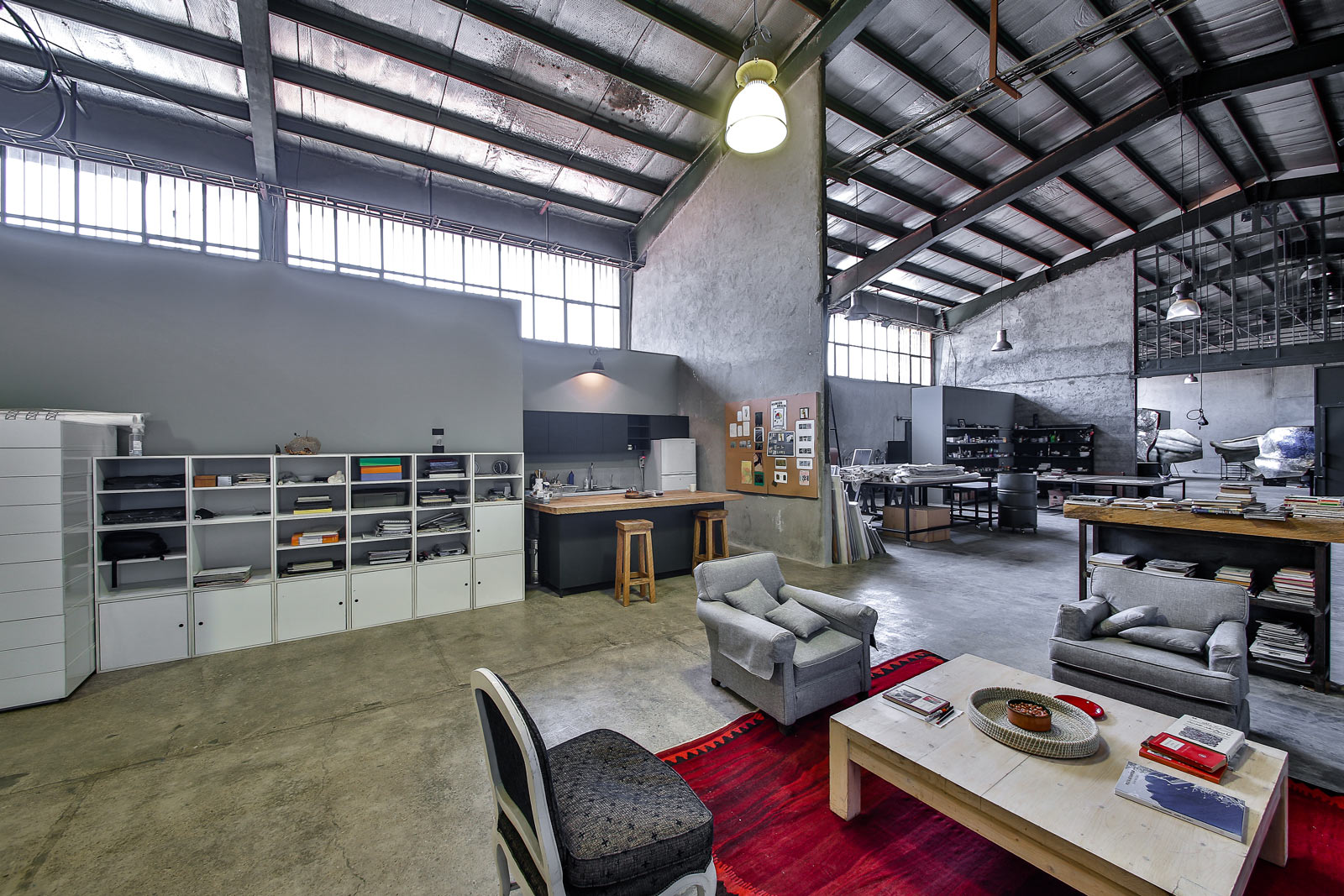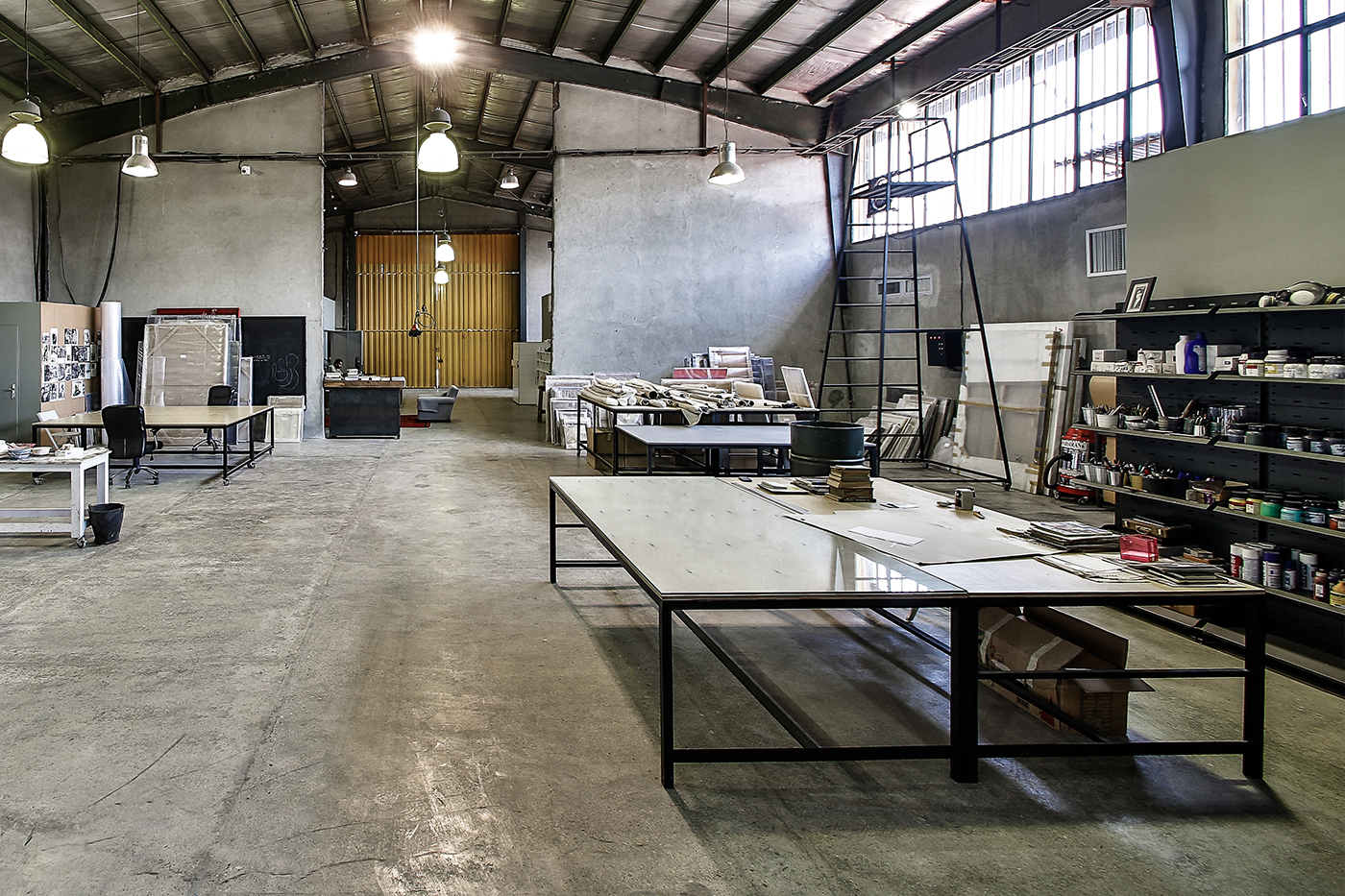STUDIO
POOYA
ARYANPOUR
The Studio plays a central role in Pooya Aryanpour’s practice as an artist, educator, designer, and project initiator. Since early in his career, he has designed, developed, and established a personalized concept of “the studio”, resulting in creating spaces where he could work on his practice and artistic projects, build up communities focused either on artwork production or collaborative efforts or develop an educational program and bring students together.

Moreover, the studio has been where the artist has evolved his philosophy, practice and intellectual discourse, continuously resisting the ephemerality and temporary nature of Tehran’s socio-political environment and artistic landscape, maintaining a steady pace and force, creating dialogue, and impacting others while remaining constantly open. For Aryanpour, the studio has always been a dynamic idea and like a living organism, with each of the components purposefully designed and built to serve particular functions as well as seamlessly working together to gather, create, and cultivate.
His very first studio, Sepand was located in Tehran’s northeastern district of Aghdasieh and was used from 1989 to 2001. This studio witnessed the development of Aryanpour’s artistic practice prior to entering university in 1993 and even after finishing his postgraduate studies in 1999. The well-lit studio was one of the units in an apartment block, and soon became a gathering space for many of Pooya’s friends, acquaintances, and fellow artist who would occasionally share the studio to create work. Moreover, as he started teaching from very early, the studio was where he experimented with and expanded his style as an instructor, initially teaching children and teenagers, and later holding classes and workshops for young adults.
Aryanpour’s experiences in his first studio led to a more ambitious step as he planned and designed many aspects of his next studio, located within Sa’dabad Historical Complex in the north of Tehran, used from 2001 to 2005. The complex, once home to the administrative and residential palaces of the ruling Pahlavi Dynasty (1925-79), had been gradually transforming into a public site, and the palaces either turning into museums or used by governmental offices.
Following an event organized by Pooya, a Sa’dabad executive offered him an abandoned warehouse within the complex to be used as a painting studio, teaching workshop, and exhibition hall. The large glasshouse was turned into two studios by Pooya and fellow artist Morteza Darehbaghi. Sa’dabad Studio was designed from the ground up to serve his artistic and educational requirements, and thus became a hub for his collaborative projects as well. It was far from the noise of the city, within a large garden, and perfectly fit for the evolution of Pooya’s painting practice. Additionally, it led to a significant expansion of his work as an instructor, making it possible to train art teachers, teaching assistants, and more diverse generations of artists.
After many shakeups in the executive team of Sa’dabad Complex, Pooya made the decision to transfer his practice into a new studio. As so, in 2005 he moved to his third studio which accommodated his practice and workshops for almost fourteen years until 2019. The seventy-year-old, two-floored building in Tehran’s Kashanak neighborhood, required extensive renovations before Pooya could call it Kashanak Studio. Consequently, a thorough operation began to transform the ground floor into a hybrid painting atelier, teaching workshop and library, and the first floor into a residential space. Aryanpour’s mirror-work sculptures started in this studio, where initially the limited backyard space was used by technicians and artisans, but was soon expanded over into a dedicated studio that made working on larger sculptures and installations possible. As so, the still-operational Khavaran Studio, located fifteen kilometers southeast of Tehran in Khavaran Woodworks Site was established. While Kashanak Studio served as the artist’s main painting studio, teaching workshop, and residence, his more extensive teaching workshops were periodically held at different spaces around Tehran augmented by his trained teaching assistants and instructors. Kashanak Studio was also a hub for artist talks, film screenings, discussion sessions, and gatherings, playing an important role in expanding Pooya’s thought, practice, and network.
Larger projects and productions required a studio with greater scale, preferably within an industrial site. During the almost two-year-long hiatus caused by the outbreak of the novel coronavirus, Pooya moved out of Kashanak Studio and maintained a smaller painting atelier he called Baagh Studio in Tehran’s Kamranieh district, while searching for sites for his future studio and continuing larger productions, although at a slower pace, at Khavaran Studio.
The search for a large integrated studio led to the site of Dayhim Innovation and Incubation Factory, approximately thirty kilometers southeast of Tehran. The 17-hectare-site, once home to a large-scale manufacturing plant producing processed wood, flooring, and furniture had ceased operations in the early 2010s. The site included several plants, warehouses, workshops, storages, offices, coworking spaces, and residential suites, that were gradually being transformed and repurposed. Pooya decided on moving his operations into one of the 1000sqm warehouses on the site and work on designing, developing, and renovating the space began in late 2020. Ghiamdasht Studio became operational in March 2021, expanding the potential for scaling up Aryanpour’s practice and housing multiple spaces for his large-scale sculptures and installations workshop, painting atelier, storage, library and archive, and living quarters. Some of the operations at Khavaran Studio became integrated into this new studio, and the former became a dedicated space for pre-processing materials used in mirror-work pieces.

Ghiamdasht Studio accommodates a diverse variety of artists, artisans, and technicians, including architectural designers, mirror-work and crystal-work specialists, archive and logistics experts, who work in tandem to realize Aryanpour’s visions and projects.